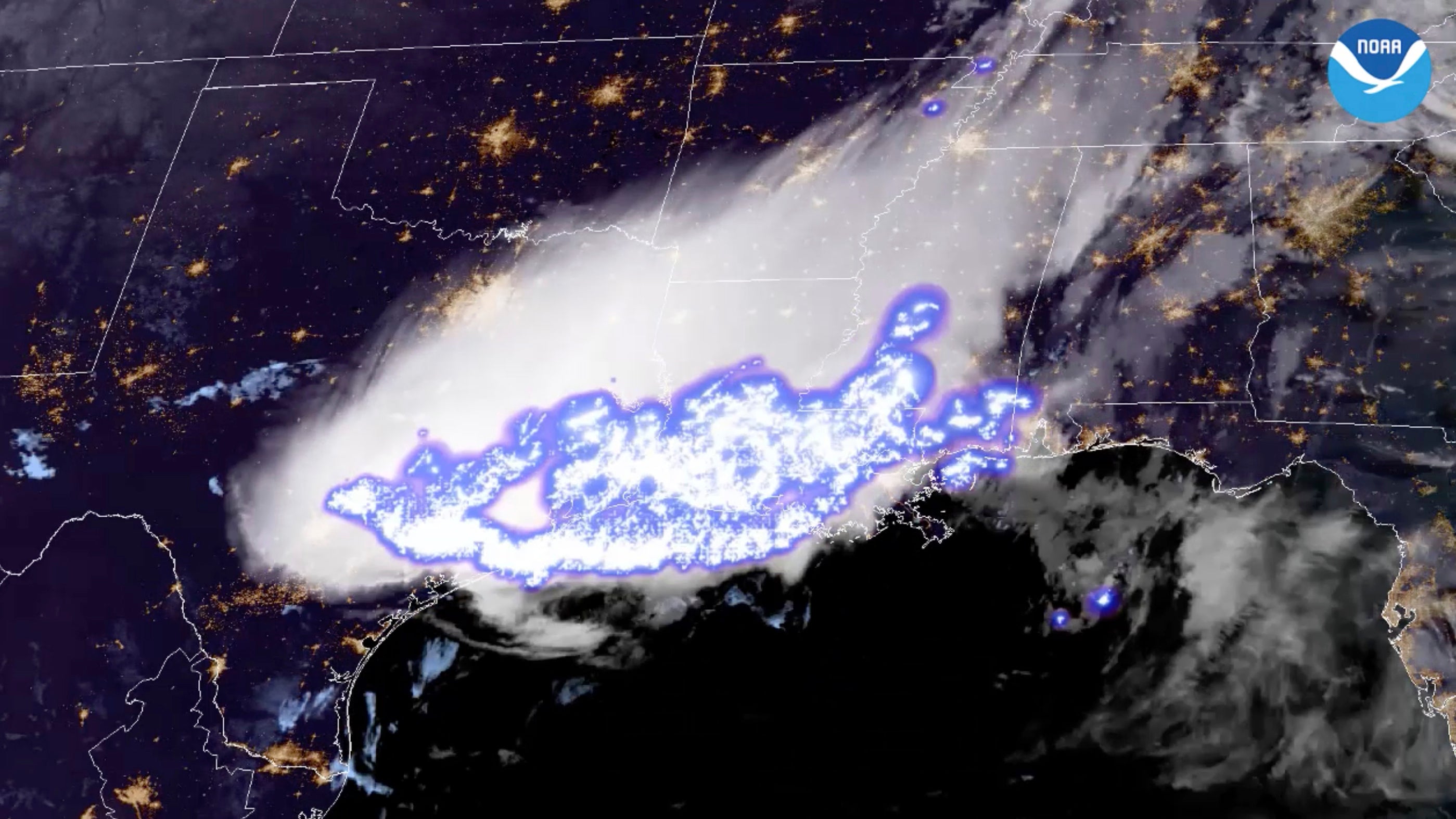477 miles over 3 states: Lightning bolt in US breaks record
A bolt of lightning that stretched nearly 500 miles across three states is the new record holder for longest flash

Your support helps us to tell the story
From reproductive rights to climate change to Big Tech, The Independent is on the ground when the story is developing. Whether it's investigating the financials of Elon Musk's pro-Trump PAC or producing our latest documentary, 'The A Word', which shines a light on the American women fighting for reproductive rights, we know how important it is to parse out the facts from the messaging.
At such a critical moment in US history, we need reporters on the ground. Your donation allows us to keep sending journalists to speak to both sides of the story.
The Independent is trusted by Americans across the entire political spectrum. And unlike many other quality news outlets, we choose not to lock Americans out of our reporting and analysis with paywalls. We believe quality journalism should be available to everyone, paid for by those who can afford it.
Your support makes all the difference.A bolt of lightning that stretched nearly 500 miles across three U.S, states is the new world record holder for longest flash.
The single flash extended 477.2 miles (768 kilometers) across Texas, Louisiana and Mississippi in April 2020, the World Meteorological Organization said Monday. That beat the old record set in 2018 in Brazil of 440.6 miles (709 kilometers).
Also in 2020, a single lightning flash over Uruguay and northern Argentina lasted 17.1 seconds, nipping the old time record of 16.7 seconds.
Normally lightning doesn’t stretch farther than 10 miles and lasts less than a second, said Arizona State University’s Randall Cerveny, who is the chief of records confirmation for the meteorological organization.
“These two lightning flash records are absolutely extraordinary,” Cerveny said in an email.
Both were cloud-to-cloud, several thousand feet above the ground, so no one was in danger, he said.
These records, which are not linked to climate change, were spotted and confirmed thanks to new satellite tracking technology. Both regions are two of the few places in the world prone to the type of intense storms that can produce what are called “megaflashes, ” Cerveny said.